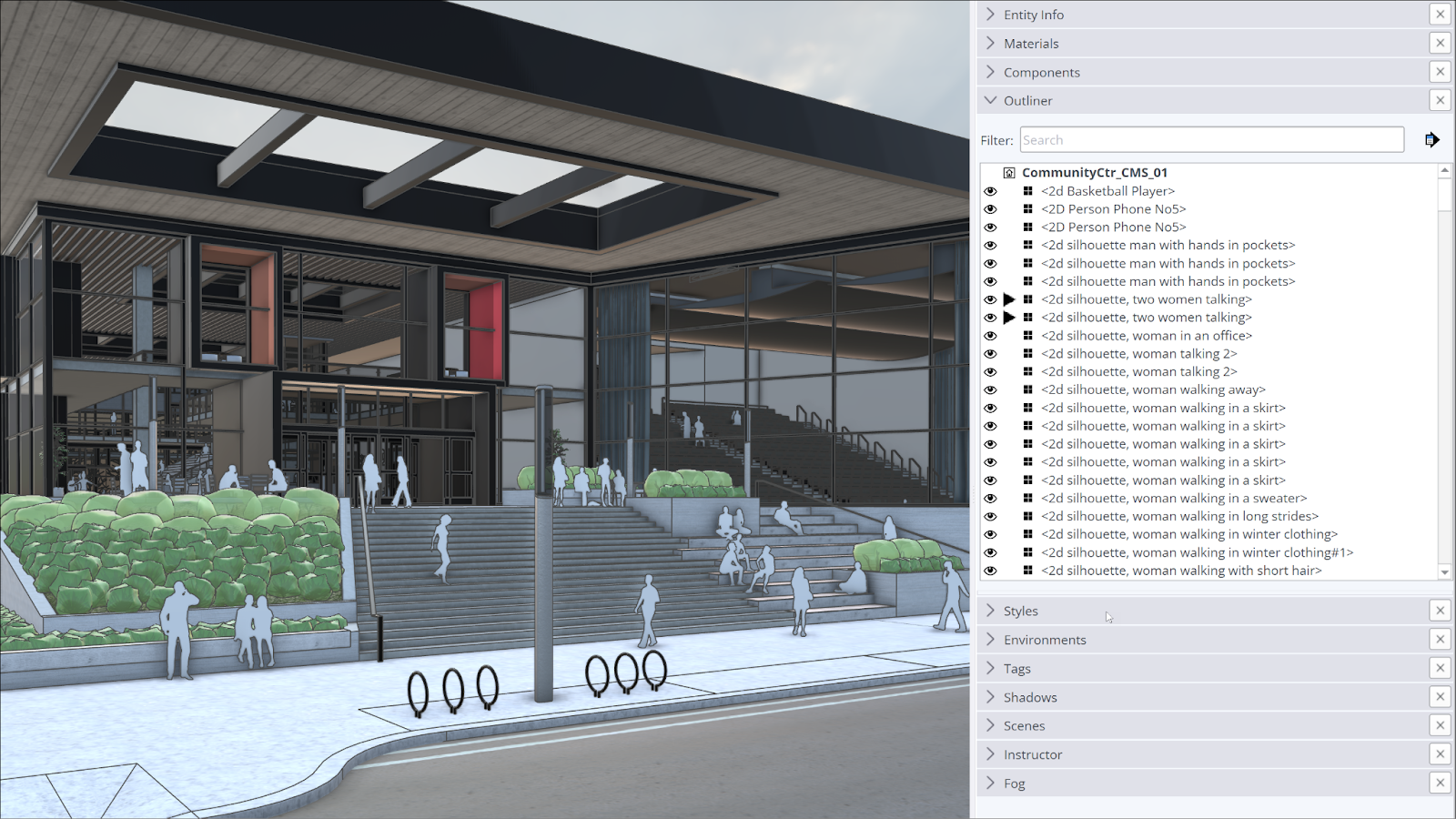With the Outliner in SketchUp you can view a model's groups, components, and section planes in a hierarchical tree. The Outliner panel makes it easy to:
- Navigate around and identify objects in large models.
- Name objects and section planes.
- Find components or section planes.
- Restructure the model hierarchy.
- Control the visibility of all objects.
The Outliner is a panel. To open the Outliner panel, select Window > Default Tray > Outliner.

When an object contains nested elements, the Outliner's navigation tree displays an arrow next to the object's name. You can click a single Object to see what's nested under it, or click Details (![]() ) and Expand All to list all the entities in a model's hierarchy.
) and Expand All to list all the entities in a model's hierarchy.
Renaming Entities in the Outliner
You can rename any Object in a model’s hierarchy. Giving entities meaningful names can help you find, select, and edit those entities.
To rename a Group, follow these steps:
- Context-click or triple click the group name in the Outliner.
- Select Rename.
- Type a name.
- Press Enter.
To rename a Component you will need to edit that component’s definition. When you rename the component definition, you change the name of every component instance in your model. For more information see Editing Components.
To rename a section plane or its associated symbol, context-click the section plane and select Rename Section Plane or Rename Symbol. Then type your desired name for the plane or symbol and press Enter. For details about section planes, see Slicing a Model to Peer Inside.
Finding and Organizing Entities with the Outliner
When you need to find a specific entity in your model, here's a few ways you can use the Outliner to help:
- Select the listing of the entity you want to find. When you select something in the Outliner it will also select it in your model. Selecting a non visible Object in the Outliner will display a hatched Object in your model.
- Sort the listing of entities alphabetically. Click Details (
 ) and select Sort By Name. When Sort By Name is not selected, entities are sorted by when they were created or inserted.
) and select Sort By Name. When Sort By Name is not selected, entities are sorted by when they were created or inserted. - Use the search filter. At the top of the Outliner, you can type a term to filter what entities appear in the Outliner.
If a model's object hierarchy needs to be adjusted, you can click and drag an item to a new position in the Outliner.
Identifying Entity Status
The Outliner uses icons and text to identify Objects or section planes and their status. The following table shows how the icon and text change as the object's status changes.
| Status | Group | Component | Section Plane |
| Closed | |||
| Open | |||
| Locked | |||
| Hidden | |||
| Visible | |||
| Inactive | na | na |
Controlling visibility with the Outliner
The Outliner can be a helpful way to hide or show elements in your model as you work on it.
To hide an entity in the Outliner, click the visibility icon next to the entities listing. The entity and everything it contains becomes hidden. Click the icon again to unhide the entity.